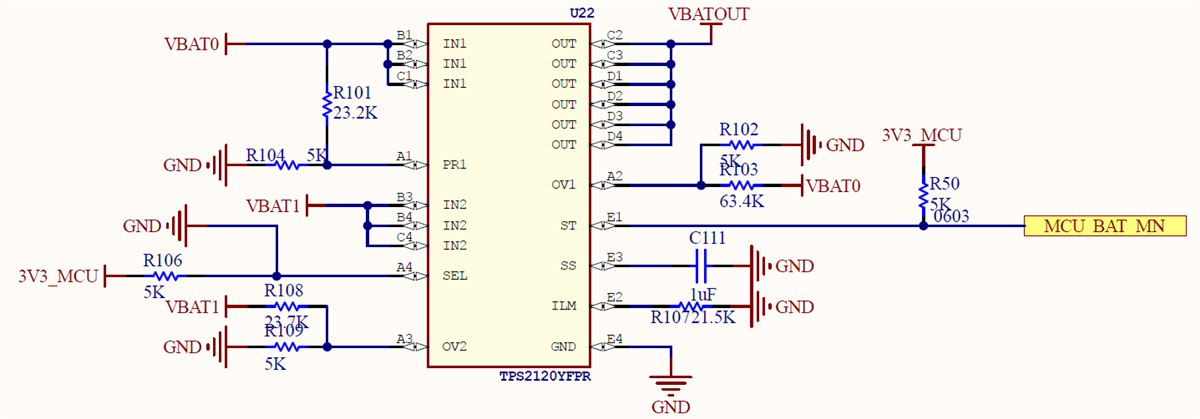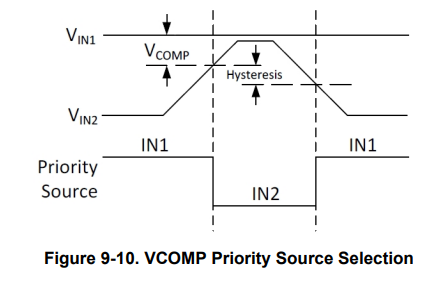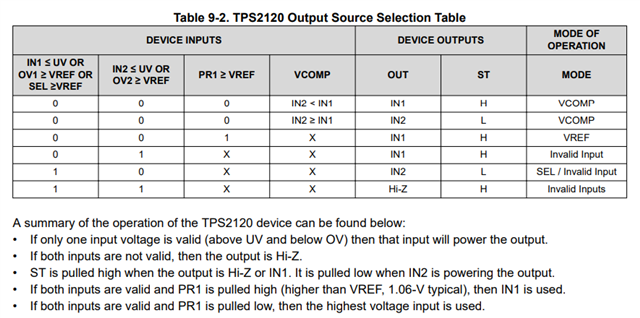Hello TI family,
I have two 14.4V DC batteries in my design. I aim that whichever of these two batteries has the higher voltage value, TPS2120 will give it to the output.
The attached design was made according to the TPS2121 infrastructure, but since TPS2121 could not be found in stocks, I am considering moving forward using TPS2120.
When I examined the technical document of the TPS2120 (related section: 10.5 Highest Voltage Operation (VCOMP)), I saw that the R101 in the attached design should be removed and R104 should be short-circuited for the design to work as I wanted. However, when I apply it this way, when the voltage levels of the two batteries are equal (for example, when both are 100% charged, both are 60% charged, etc.), the output voltage becomes 0 (zero) Volt.
How can I solve this problem and my design goal in the fastest and most accurate way by using TPS2120 in my design?




